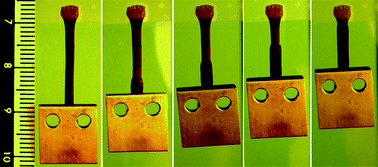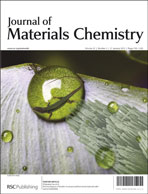A new optically triggered shape memory composite material was prepared and investigated. Poly(ε-caprolactone) (PCL)-surface functionalized AuNPs were loaded in a thermosensitive shape-memory polymer (SMP) matrix of biodegradable, branched oligo(ε-caprolactone) (bOCL) cross-linked with hexamethylene diisocyanate (HMDI), referred to as XbOCL. By making use of a localized photothermal effect arising from the SPR absorption of AuNPs, we are able to demonstrate an optically triggered and spatially selective shape recovery process, with a stretched AuNP-loaded XbOCL film undergoing stepwise contraction and lifting of a load. Since the shape recovery process can be halted at any time by turning off the light exposure, multiple intermediate shapes can readily be obtained. These are appealing features that cannot be obtained from thermally activated SMPs based on a bulk thermal effect. Moreover, the magnitude of the photoinduced temperature increase of the material can be controlled by adjusting the laser power, it is also possible to use the same AuNP-loaded composite material for applications with different environmental temperatures below Ttransition, since the thermal transition at T > Ttransition can be optically induced by a laser from different environmental temperatures.

You have access to this article
 Please wait while we load your content...
Something went wrong. Try again?
Please wait while we load your content...
Something went wrong. Try again?


 Please wait while we load your content...
Please wait while we load your content...